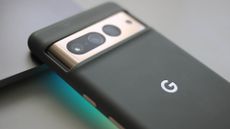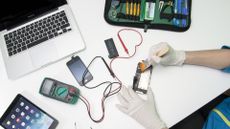Mobile Phones
Discover expert analysis on mobile phones with news, reviews and insights from the team at IT Pro.
Explore Mobile Phones
-

Okta launches new partner programme to capture $80b identity market
News Revamped initiative introduces a new tiering system and badging model to showcase partner capabilities
By Daniel Todd Published
News -

Samsung Galaxy Z Fold4 review: A gorgeous screen for an ugly price
Reviews Samsung's high-end flip device hides a beautiful screen which, when unveiled, will impress most users
By Zach Marzouk Published
Reviews -

Sony Xperia 5 IV review: The best 'Pro' camera system around
Reviews A compact smartphone with almost all the capabilities of a professional camera
By Bobby Hellard Published
Reviews -

Apple iPhone 14 Pro review: A dynamic phone from top to bottom
Reviews The Pro model of iPhone 14 is arguably the best Apple has ever produced
By Bobby Hellard Published
Reviews -

Oppo Find X5 Pro review: An Android powerhouse fit for business
Reviews Oppo's international reputation comes of age with a true flagship device combining the best of Android with some unique extras
By Chris Merriman Published
Reviews -

Google Pixel 7 Pro review: A refined Pixel filled with innovation
Reviews Long battery life and more magic camera tools in what might very well be the best Android phone around
By Bobby Hellard Published
Reviews -

OnePlus 10 Pro review: An almost great smartphone with long battery life
Reviews A decent effort from the Chinese brand, although it no longer offers the best value for money
By Bobby Hellard Published
Reviews -

Blackberry revenue falls by 4% as cyber security division takes hit
News Despite this, the company’s Internet of Things (IoT) division increased its revenue by 28% as it attracted new customers from the automotive sector
By Zach Marzouk Published
News -

Tech repairs: Who can you trust to repair your hardware?
In-depth How to establish whether the repairer is up to the job when you need a computer or smartphone to be fixed
By Lee Grant Published
In-depth -

Apple drops the notch for iPhone 14 Pro and Pro Max
News Tech giant offers up premium models with A16 chips, always-on displays and new Dynamic Islands
By Bobby Hellard Published
News -

Apple’s iPhone 14 launch is a mini disappointment
Analysis Poor sales and a shrinking global economy might have killed off the best iPhone of our generation
By Bobby Hellard Published
Analysis -

New Huawei Mate 50 phone can link up with Chinese satellite system
News This makes it the first smartphone maker to bring satellite communication technology to the consumer market
By Zach Marzouk Published
News